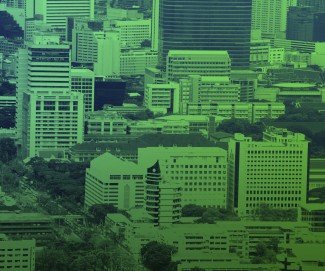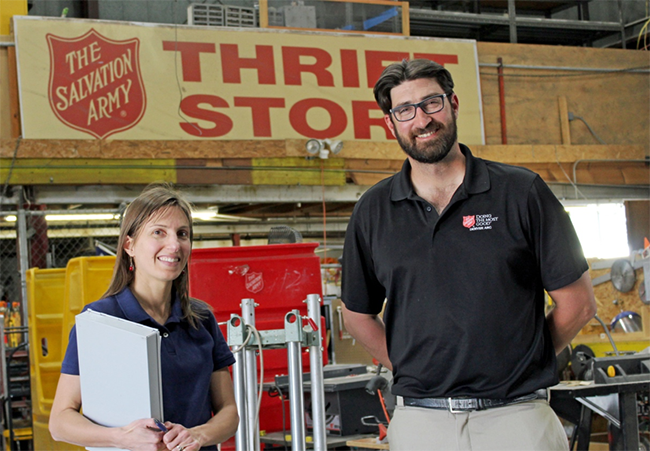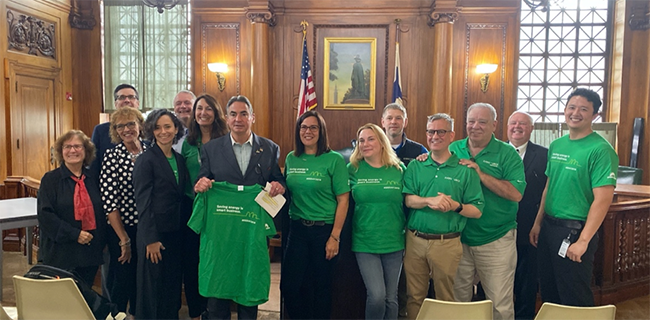A growing number of energy efficiency program implementers across the United States serve nonresidential organizations in low- to moderate-income (LMI) communities, which stand to benefit most from efficiency investments, according to an ACEEE study released today.
Our research is the first to explore how these program implementers are trying to reach LMI communities by providing services to local groups such as nonprofits, schools, government offices, businesses, medical facilities, shelters, and community centers. We examined 39 programs serving such nonresidential organizations in LMI communities and found that six exclusively target low-income areas. The other 33 programs use targeted outreach and incentives to reach LMI communities within existing programs. This approach facilitates enrollment and participation for organizations in these communities.
Typically, low-income energy efficiency programs focus on residential buildings. They do not often reach or serve nonresidential organizations, though energy efficiency provides many benefits to community-serving institutions in low-income areas. It can reduce capital and maintenance costs, shorten time spent on building maintenance, and reduce monthly utility bills. As a result, these institutions can spend more of their money on their projects and within their communities. Energy efficiency can also reduce greenhouse gas emissions, improve indoor health, and boost economic stability.
Despite these benefits, community-serving institutions in LMI communities often have fewer financial resources and face additional barriers to investing in energy efficiency. They deal with historical policies of economic and social exclusion, such as discriminatory lending practices, underinvestment, and redlining. Therefore, these organizations may need additional resources to improve energy efficiency in their buildings.
What our study reveals
The 39 programs we analyzed are offered by 28 implementers across 22 states. About a third of the programs serve only one organization type, while the rest serve multiple types of organizations. Nonprofits are the most common organization served, followed by small businesses, educational institutions, and religious centers.
Although approaches differ in scope, most programs offer measures with high energy saving potential (e.g., lighting, heating system upgrades) as well as additional guidance.
Program implementers indicate that partnerships are key to success. They said they were better able to reach potential participants and gain valuable stakeholder input by partnering with local governments, other community-based organizations, and chambers of commerce. Key strategies for success include continuously engaging stakeholders, developing strong partnerships, and tailoring program marketing.
How two programs work
We found many programs that successfully serve community-based institutions. For example, Energy Outreach Colorado’s Nonprofit Energy Efficiency Program helps nonprofit organizations serving limited-income communities in the state reduce their energy bills, which allows them to dedicate more resources to their communities. It provides a one-stop-shop model for nonprofits, offering energy audits, weatherization measures, heating and cooling upgrades, health and safety improvements, and contractor management.
Another example is Eversource Energy’s Main Street Program, which provides tailored outreach materials, detailed energy audits, and direct install measures for small businesses in downtown areas of target communities. Eversource works with Massachusetts cities and towns through their community and economic development offices, local chambers of commerce, and other local businesses to reach small businesses. It selects communities based on input from community-based partners and stakeholder engagement and aims to reach those with historically low participation in efficiency programs, often low-income communities.
What others can do
While our survey identified many program examples, these programs are not yet commonplace. Policymakers and program implementers can take action to further expand and improve these programs. They can pass legislation, set policy targets, or change cost-effectiveness requirements for programs that serve nonresidential organizations in LMI communities. For example, regulators or program implementers can conduct a needs assessment on the potential energy savings of community-based efficiency programs, which can then influence program design and policy choices.
Policymakers can ensure that robust financing options are available to help cover program costs, such as on-bill programs, green leasing, Commercial Property Assessed Clean Energy (C-PACE), and green banks. They can also set targets for diversity in job training, contracting, hiring, and accessibility. Implementers seeking to better serve LMI communities can explore examples from this study to expand their focus beyond residential buildings to increase equitable access to energy efficiency throughout communities.





